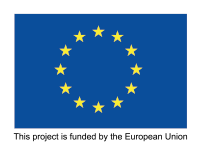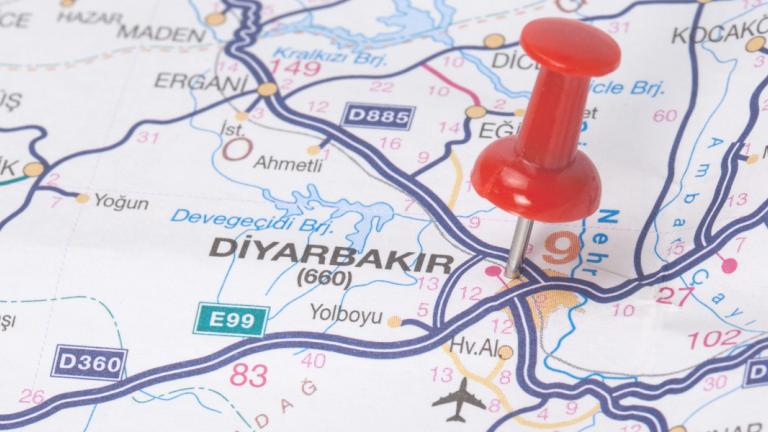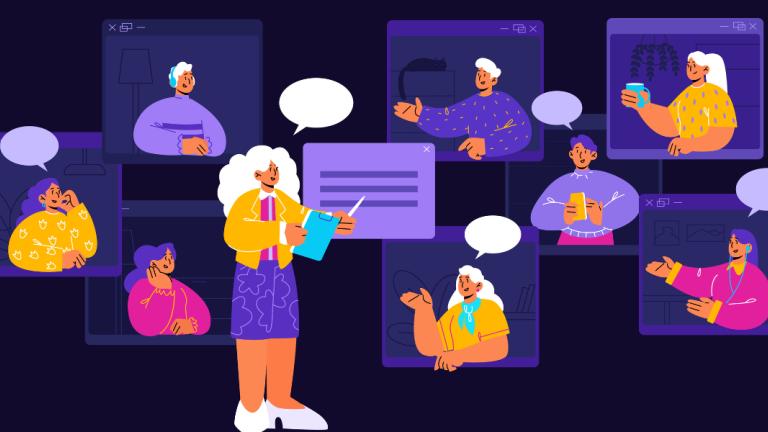
A very famous policy document!
One of the elements that has recently been on the rise in the civilian sphere is policy documents. There is even a state of inflation. One reason for this popularity is obviously funder demands.
Another reason is that the political, social and economic tensions of recent years and the shrinkage of civic space have manifested themselves in various conflicts and challenges within organizations.
Another very important reason is that while the civic space and activists are being updated with new concepts and approaches, organizations face the necessity to change their old procedures, approaches and ways of relating. As such, policy development imposes itself as a necessity for organizations.
Policy documents appear as an undeniable tool to keep peace at home while struggling in an unfair and unequal world. But of course, in the complex universe of human relations, regulating the relations between the people of the organization and the organization's relations with people, solving existing problems and preventing new ones requires efforts beyond 3-5 page documents. Therefore, in this article, we would like to offer some answers to the question "so what to do?" and an invitation for reflection. For this, we will try to contribute from the perspective of prevention, transformation and learning instead of the classic interventionist policy document logic.
How can a policy document leave the pages and penetrate organizational life?
Firstly, the policy document needs to move away from being a "written for pages, we'll implement if fate allows" manuscript. Because a policy document is not a specialized product; it is not a mere compilation of standard procedures. A policy document is the result of a process where the organization and its people become intimately connected, where issues are contemplated, and a collective learning memory emerges after sharing experiences and discussing concerns. It is a tool for clarification, for understanding each other, for giving the right name to problems. It may be a cliché, but it is also true for policy documents; "it is not the destination that matters, but the road itself". In other words, the policy document is not a few pages of documents, but the process of its preparation. Therefore, it is necessary to make policy documents an occasion for discovery and learning processes and to change the preparation process.
So how?
First of all, it is necessary to give policies, which are an important element of institutionalization, the importance and time they deserve. However, the biggest contradiction of every work that gives soul to institutionalization is workload, organizational intensity and fatigue. Organizations are of course right about this. Who can underestimate what an organization has to deal with on a daily basis?
Unfortunately, every improvement and institutionalization effort that we cannot allocate time for ends up costing much more than the time we consider excessive. The absence of descriptive policies such as job descriptions and human resources, as well as preventive and empowering policies against issues like violence and mobbing, can lead to motivation, labor, memory, employee, member, volunteer, and reputation losses. The individuals, who are the most crucial element of organization, are bruised and detached from the organizations. Organizations that derive their strength from people are left without them. It is essential, in this situation, to prioritize the phrase "let's handle this first" over "we need it but don't have time" regarding policy documents and to allocate time. It is necessary to support time with participation and inclusiveness. It should be remembered that everyone can contribute their input and experience to a policy document. Opening the door to hearing these contributions, moving away from expertise and templates, and developing tools are enjoyable ways to foster collective learning and empowerment.
How to produce a functional policy document?
Other important elements of functional policy documents are being a learning organization, balancing the organization and the individual, sharing responsibility, and the intersections of these three.
If we start with the learning organization approach, the concept is defined as an organization that has the ability to continuously acquire new knowledge and skills, use existing knowledge effectively and adapt to changing conditions. It can make a big difference if the process of drafting policy documents and the internal logic of the document are in line with this concept.
To elaborate a bit, policy development processes offer us the opportunity to make sense of and learn from past experiences. The guidance of questions such as what happened, why it happened, how it happened, what are our tools that need to be preserved, what needs to be changed, what needs to be corrected allows us to prepare policies based on our experiences and strengthen us as a team. Approaching past processes with these questions turns negative experiences into learning opportunities instead of black holes that cannot be overcome. Instead of a passive approach to problems, seeking responsibility from outside, getting involved as agents of change strengthens the organization, its people and relationships, and makes ties more durable. It replaces the dichotomy of right and wrong in the face of challenges and problems with elements of learning, improvement and transformation.
Good design: prevention, intervention, repair, transformation
As for the design of policy documents, the common approach is focused on identification and intervention. However, the policy document should include prevention, intervention, repair and transformation pillars on issues such as conflict and violation. Because the problems/violations experienced within the organization are not only a matter of 1-2 people. Its shadow reflects on the organization and relationships. For this reason, only intervention-oriented policy documents cannot overcome the challenges alone. The elements of prevention, intervention, repair and transformation call the organization and its people to take responsibility together. For this reason, the policy document should well define the necessary steps and organizational learning processes, especially for repair and transformation in cases such as violations.
Of course, while defining these, we should pursue applicable, understandable, functional, inclusive designs, not the perfect, ideal.
But do policy documents solve everything?
Yes and no.
If we were to delve into the answer 'no'; documents that define systems and processes, such as policy documents, are indeed significant areas for empowerment within organizations. However, expecting a document to be a cure-all can lead to disappointment in the end. The implementation of a document is undoubtedly influenced by processes such as individuals within the organization sharing responsibilities, and the organization and its members being familiar with the document. Yet, along with these, the needs upon which the policy is built often bring additional improvement responsibilities to the organization and its management. For example, the source of internal team difficulties may stem from uncertainties in the organization's job design or deficiencies in planning. Focusing solely on conflicts or parties here may not have the ability to provide a definitive solution to the problem. After all, the source of the conflict is not only individuals but also organizational and managerial needs.
If we move from here to 'yes', the preventive mechanisms, actions and responsibilities we define when preparing policies point exactly to this point. If an organization identifies the needs and shortcomings well and takes the initiative to implement the preventive actions that emerge from this, it will strengthen the function of the policy document. In addition, of course, seeing the process as cyclical, learning from and updating implementation experiences will increase the solution capacity of policy documents.
In conclusion, when we intersect the concept of learning organizations with policy documents, and when we add prevention and transformation to intervention, we can learn and grow from the challenging processes as organizations and individuals. The learning organization approach is also one of the main elements of BİRLİKTE Institutional Support Program. Therefore, in the mentoring processes we conduct, we approach policy-making processes with this understanding, accompany organizations, and continue to learn.
You can access the Information Note on Producing Living and Transformational Policy Documents for CSOs here. (Only in Turkish)

STGM Studio
We have good news for CSOs that want to produce video content. In our studio in our office, you can shoot your videos and get editing support.





